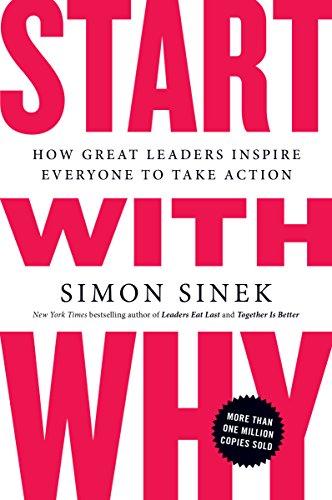Simon Sinek, the author of this book is a motivational speaker and someone who looks at the world with great optimism. His Ted-talk is the third most viewed talk. Through this book and interactions with the public, he actively encourages you to think beyond the obvious, to go back to the root cause of starting your business or joining a job. He teaches leaders how to inspire the whole organization to think that it doesn’t matter what you do, it matters why you do it.
He says that famous leaders such as Martin Luther King, the Wright Brothers (who invented the first aeroplane), and Steve Jobs are all from very different fields but they had one common factor. They all began their research and their ambitious projects based on a single ‘why’.
“Inspiring leaders and companies…think, act and communicate exactly alike. And it’s the complete opposite of everyone else.”
His ideas have grabbed the attention of various industries, from small startups to Fortune 50 companies and from Hollywood to the Congress and to the Pentagon. Here are 5 Key Leadership Lessons from the book ‘Start With Why’ by Simon Sinek.
1. Understand the ‘Golden Circle’
The author looks at exceptional leaders who have always thought differently from common people and that is what has brought them success. He says it is important to understand how these great minds think. He shares in the book that inspirational leaders start by identifying their purpose, cause, or vision.
He defines the concept of a ‘Golden Circle’ in the book. It starts with a vision (the “Why”), then moves to implementation (the “How”), and then conquers the product or service (the “What”).
The ‘why’ factor is a justification for a company to exist, it explains how things are done in the company and how decisions are made.

2. Inspiration is the Key to Influence People
The author talks about how inspiration works better than manipulation.
Manipulation such as dropping the price, blinking texts, using fear, peer pressure, promotions – these lead to short term gains but cost more over a longer period of time. If people understand what truly inspires you and understand why you wish to sell a product that is the key to influence people, build an image, and make a close connection to your audience.
People should feel compelled to buy your product in the sense that they feel they really need it and genuinely resonate with the message behind it.
Great leaders…inspire people to act…Those who truly lead…create a following of people who act not because they were swayed, but because they were inspired. – Simon Sinek
3. Money or Profits Is Not A ‘Why’
Money is not a ‘why’ and is never the reason that leads to the success of a company. Innovation comes from thinking about the ‘why’ – which is the reason you get out of bed in the morning.
Often when organizations are on a downfall, they only look at making money and surviving. Profits are important but more important than that are the ethics, values, unique practices of a company that sets it apart and the same apply to people as well.
Simon Sinek shares the stories of Apple, Wal-Mart, Costco, Starbucks, Martin Luther King Jr, and a few others in the book.
“Imagine if every organization started with Why. Decisions would be simpler. Loyalties would be greater. Trust would be a common currency.”
4. The Power of Trust
When ‘what’, ‘how’ and ‘why’ come together, that builds trust in people and in organizations. People perform at their best when they are part of a culture that fits their values and beliefs.
“If there were no trust…no one would take risks. No risks would mean no exploration, no experimentation and no advancement of the society.” – Simon Sinek
He gives the example of Apple and the huge trust it has build with its customers who believe in the company’s philosophy. Other technology firms might make good products too, but Apple resonates with customers because people appreciate its vision.
5. Communication Begins with Listening
Listen to your audience. A simple thing like a logo can reflect a lot on the company and one must take note of how it is perceived. For example, the logo of Harley Davidson, the motorcycle company resonates with bikers and with adventure lovers so it has helped the company greatly.
Listening and observing your competition is very helpful.
The author poses a ‘Celery Test’ in which he gives the example that to grow what do humans need? A variety of good foods but you don’t need all of them. Similarly, when you observe your competition and listen to what your audience needs, you will come up with your own list of factors that your company should consider.
There is also a new form of competition that is when you work to improve yourself, individually. You are the best competition for yourself but you do need to listen to people around you to make better decisions.
I recommend this book to anyone looking to improve their relationships with others and recognize ways that good leaders can influence those around them.

Trackbacks/Pingbacks